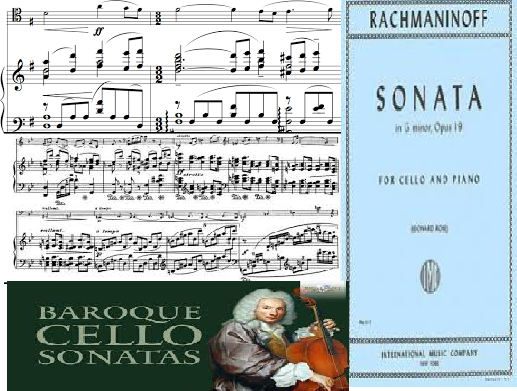The cello, known for its rich, emotive sound, has been a beloved instrument in classical music for centuries, and the cello sonata vogue remains one of the most celebrated forms in the instrument’s repertoire. The popularity, or “vogue,” of the cello sonata has waxed and waned over time, but its allure endures. From its early beginnings in the Baroque period to its pivotal role in Romantic and modern compositions, the cello sonata continues to captivate audiences and inspire composers. This article explores the evolution, iconic compositions, and ongoing influence of the cello sonata.
A Brief History of the Cello Sonata
The cello sonata vogue originated in the Baroque era, around the 17th century, when composers such as Domenico Gabrielli and Antonio Vivaldi began writing solo pieces for the instrument. At this time, the cello was primarily used as a bass instrument in ensembles, and the sonata allowed it to take a more central role. Baroque sonatas for cello typically followed a slow-fast-slow-fast structure and were written for cello and basso continuo (a form of harmonic accompaniment).
With the Classical period came a shift in musical tastes and structures, and composers like Ludwig van Beethoven and Franz Schubert began to explore the expressive capabilities of the cello through their sonatas. Beethoven’s five cello sonatas are especially notable, as they mark the beginning of the cello’s rise as a solo instrument. His compositions paved the way for future sonatas and remain cornerstone pieces in the cello repertoire.
The Romantic Era: The Height of Cello Sonata Popularity
The Romantic period saw the cello sonata reach new levels of popularity. Composers were drawn to the cello’s lyrical quality, capable of conveying deep emotion and intensity. Johannes Brahms and Frédéric Chopin, both Romantic giants, contributed heavily to the genre. Brahms’ Cello Sonatas No. 1 and No. 2 are still frequently performed, renowned for their technical demands and emotional depth. Chopin’s one and only cello sonata, Op. 65, is also highly revered, showcasing the expressive range of the cello through a partnership with the piano.
In this period, the cello sonata became a medium for showcasing virtuosity, with complex fingerings, bowings, and dynamic contrasts. Composers embraced the instrument’s rich, resonant low register and the dramatic potential of its higher range, allowing for a full exploration of the cello’s voice.
The Cello Sonata in the 20th Century and Beyond
As music transitioned into the 20th century, the cello sonata remained relevant, reflecting new musical languages and styles. The works of Sergei Rachmaninoff, Samuel Barber, and Dmitri Shostakovich continued the legacy of the sonata form, bringing modern harmonies, rhythmic complexity, and innovation to the genre. Shostakovich’s Cello Sonata in D minor, Op. 40, is a testament to the adaptability of the form, with its mix of lyricism and biting dissonance.
Today, contemporary composers continue to write cello sonatas, often experimenting with new forms, electronic elements, and avant-garde techniques. The cello sonata has also expanded beyond Western classical music traditions, incorporating influences from jazz, world music, and even pop, creating a genre that evolves with the times while retaining its classical roots.
Iconic Cello Sonatas to Explore
For those new to the cello sonata or looking to revisit classics, here are some iconic works to listen to:
- Ludwig van Beethoven – Cello Sonatas No. 1-5: A groundbreaking cycle that showcases the development of the cello sonata form.
- Johannes Brahms – Cello Sonata No. 1 in E minor, Op. 38 and No. 2 in F major, Op. 99: Rich in Romantic expression, with challenging yet rewarding passages.
- Frédéric Chopin – Cello Sonata in G minor, Op. 65: A lyrical, deeply emotional work that shows off the cello’s lyrical capabilities.
- Dmitri Shostakovich – Cello Sonata in D minor, Op. 40: A modern classic, blending somber themes with moments of intensity.
- Samuel Barber – Cello Sonata, Op. 6: A lush, expressive piece with modern American influences.
The Cello Sonata’s Enduring Appeal
The cello sonata’s lasting appeal lies in its ability to convey a wide range of human emotions. The cello’s sound—at once intimate and powerful—has a unique way of drawing listeners into its narrative. Whether it’s the sorrowful melodies of a Romantic sonata or the edgy dissonance of a 20th-century work, the cello sonata continues to captivate audiences and musicians alike.
In the world of classical music, where the concept of “vogue” may seem fleeting, the cello sonata has proven its timelessness. Each generation of composers and performers brings a fresh perspective to the form, ensuring that it remains both relevant and revered. For music lovers, the cello sonata offers an enduring connection to the soul of the instrument, a journey through time and emotion that speaks to listeners across eras and cultures.
Read more :
1= https://rapidurlindexer.net/blogs/what-protein-gives-hair-its-strength-all-about-rout-hair-and-more/
2= https://rapidurlindexer.net/blogs/what-is-biitland-com-digital-assets/
3= https://rapidurlindexer.net/blogs/what-icepower-modules-are-in-the-w4s-st-500-mkii/
5= https://rapidurlindexer.net/blogs/the-cello-sonata-a-timeless-vogue-in-classical-music/
6= https://rapidurlindexer.net/blogs/368-sumac-trail-evans-ga-30809-to-forest-park-ga/
8= https://rapidurlindexer.net/blogs/azbro-the-fox-the-cunning-hero-of-the-forest/
9= https://rapidurlindexer.net/blogs/mon-a-bandy-kangala-the-yearning-heart-in-bengali-culture/
10= https://rapidurlindexer.net/blogs/prisha-gandhe-rising-star-of-cjva-volleyball/



